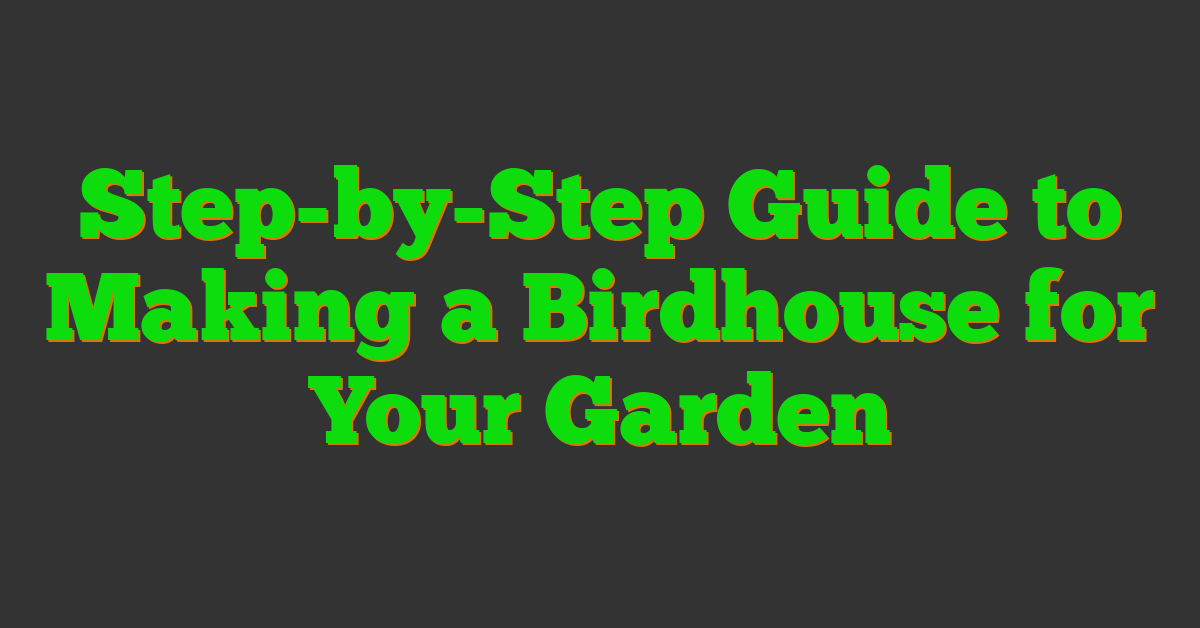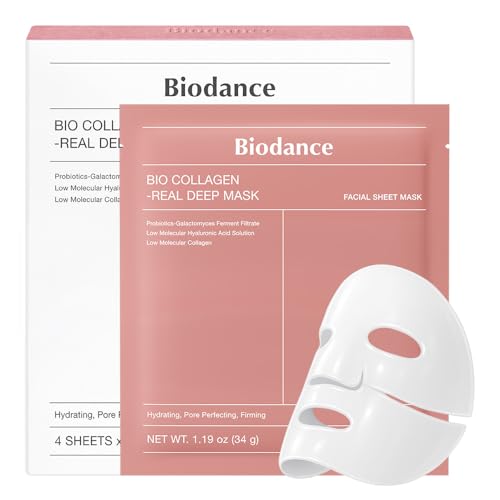Creating a birdhouse for your garden is a rewarding project that brings nature closer to home. I remember the first time I saw colorful birds fluttering around my backyard, and I knew I wanted to give them a cozy spot to nest.

Building a birdhouse is simpler than you might think and adds a charming touch to any garden. Plus, it offers a safe haven for our feathered friends. Whether you’re a seasoned DIY enthusiast or just starting out, crafting your own birdhouse is a delightful way to spend an afternoon and connect with the outdoors.
Overview of Birdhouses
Birdhouses provide essential nesting sites, supporting local bird populations. They come in various types, each suited to different bird species.
Types of Birdhouses
- Mounted Birdhouses: Attached to poles or trees, ideal for bluebirds and sparrows.
- Window Birdhouses: Fixed on windows, attracting chickadees and wrens.
- Hanging Birdhouses: Suspended from branches, suitable for hummingbirds and orioles.
Common Materials
- Wood: Durable and natural, commonly used for traditional designs.
- PVC: Lightweight and weather-resistant, requiring minimal maintenance.
- Recycled Materials: Eco-friendly options like old crates or bottles.
Key Features
- Ventilation: Ensures air circulation, preventing overheating inside.
- Drainage Holes: Allow water to escape, keeping the interior dry.
- Predator Guards: Protect occupants from squirrels and raccoons.
Typical Dimensions
| Bird Species | Width (in) | Depth (in) | Height (in) |
|---|---|---|---|
| Bluebirds | 5 | 5 | 10 |
| Chickadees | 3 | 3 | 8 |
| Wrens | 4 | 4 | 9 |
Proper placement and design enhance the effectiveness of birdhouses, ensuring they serve as safe and attractive habitats for various birds.
Benefits of Making Your Own Birdhouse
Creating a birdhouse adds both charm and functionality to your garden. It supports local bird populations while allowing you to enjoy their presence up close.
Encouraging Local Wildlife
Providing a safe nesting spot boosts local bird populations. It creates habitats for species like bluebirds, sparrows, and woodpeckers. Increased bird activity helps control insects and pollinate plants, enhancing garden health.
Customization Options
Building your own birdhouse allows endless customization. You can choose materials like cedar or recycled wood for durability. Design features such as ventilation, drainage holes, and predator guards ensure the birdhouse meets specific needs. Painting and decorating personalize the birdhouse to match your garden’s aesthetic.
Materials Needed
Gather the essential materials to construct a durable birdhouse for your garden. Choosing the right components ensures a safe and inviting home for your feathered friends.
Wood Types
- Cedar: Naturally resistant to decay and insects, cedar lasts longer outdoors.
- Pine: Affordable and easy to work with, pine is a popular choice for DIY projects.
- Redwood: Offers excellent strength and durability, making it ideal for long-lasting birdhouses.
- Plywood: Use exterior-grade plywood for a sturdy structure, ensuring it can withstand weather conditions.
Tools Required
- Saw: A handsaw or power saw cuts wood pieces accurately to size.
- Drill: Necessary for making entrance holes, ventilation, and mounting screws.
- Measuring Tape: Ensures precise measurements for all components.
- Hammer or Screwdriver: Secures nails or screws to assemble the birdhouse.
- Sandpaper: Smooths edges and surfaces to prevent injury to birds.
- Safety Gear: Protect your eyes and hands while working with tools.
Design and Planning
Designing a birdhouse involves selecting the appropriate style and ensuring the correct dimensions for your chosen bird species. Proper planning enhances the birdhouse’s functionality and attractiveness in your garden.
Choosing the Right Design
I consider several factors when selecting a birdhouse design:
- Bird Species: Different birds prefer specific styles. For instance, bluebirds favor open-fronted houses, while wrens need smaller entrances.
- Mounting Options: Decide between hanging, mounted on a pole, or attaching to a structure based on your garden layout.
- Ventilation and Drainage: Ensure the design includes proper ventilation holes and drainage to maintain a healthy environment.
- Predator Protection: Incorporate features like predator guards or tight-fitting entry holes to safeguard the birds from threats.
- Aesthetic Appeal: Choose a design that complements your garden’s appearance, using colors and finishes that blend naturally.
Sizing and Dimensions
Proper sizing is crucial for creating a comfortable and secure birdhouse. Different species require specific dimensions:
| Bird Species | Entry Hole Size | Floor Dimensions (inches) | Height (inches) |
|---|---|---|---|
| Bluebird | 1.5 | 5 x 5 | 12 |
| Wren | 1 | 4 x 4 | 10 |
| Chickadee | 1.25 | 4.5 x 4.5 | 11 |
| Sparrow | 1.25 | 4 x 4 | 9 |
I use these measurements as guidelines to ensure each birdhouse meets the specific needs of its intended inhabitants. Adjusting dimensions slightly can accommodate different species or accommodate local bird populations.
Step-by-Step Construction
Building a birdhouse involves precise cutting and careful assembly. Here’s how I approach each step to ensure a sturdy, safe home for your garden birds.
Cutting the Pieces
First, measure and mark the wood based on your design. Then, use a saw to cut the following pieces:
- Front Panel: 10″ high by 8″ wide
- Back Panel: 10″ high by 8″ wide
- Side Panels: Two pieces, each 10″ high by 7″ deep
- Roof: 10″ by 8″, angled for water runoff
- Floor: 5″ by 5″
Sand all edges to eliminate splinters. Verify each piece fits accurately to maintain the birdhouse’s structure.
Assembling the Birdhouse
Begin by attaching the side panels to the back panel using nails or screws. Next, secure the front panel, ensuring the entrance hole aligns correctly. Install the floor panel, then attach the roof at an angle to allow proper drainage. Add ventilation holes and predator guards to enhance functionality. Finally, inspect each connection for stability to ensure the birdhouse is durable and safe.
Finishing Touches
Adding the final elements enhances your birdhouse’s appearance and durability.
Painting and Decorating
Painting and decorating your birdhouse personalize its look while protecting it from weather.
- Priming ensures paint adherence, applying a uniform base coat.
- Color selection blends with the garden, choosing natural tones like green or brown.
- Design patterns add visual interest, incorporating simple stripes or leaf motifs.
- Sealing safeguards the paint, using a weather-resistant clear coat.
Installing the Birdhouse
Installing your birdhouse properly ensures it provides a safe habitat for birds.
« Landscape Architecture Awards: Highlights of Top Sustainable and Innovative Designs Installing a Pergola: Easy DIY Steps to Transform Your Outdoor Space »
- Location selection finds a spot with sunlight and shade, placing it at least 6 feet high.
- Mounting method secures the birdhouse, attaching it to a tree trunk or a sturdy post.
- Orientation directs the entrance away from prevailing winds, minimizing rain entry.
- Accessibility allows for easy maintenance, ensuring space around the birdhouse for ventilation and drainage.
Conclusion
Building a birdhouse has been such a fulfilling project for me. Seeing colorful birds visit my garden brings so much life and joy to the space.
It’s amazing how a simple DIY project can create a cozy home for our feathered friends. Plus getting hands-on and working with wood was really enjoyable.
I love knowing that my garden is not only more beautiful but also supporting local wildlife. Every time I hear birds chirping, I’m reminded of the effort and care that went into creating their new habitat.
If you haven’t tried making a birdhouse yet you’ll definitely find it a rewarding experience. Give it a go and watch your garden come alive with the sounds and colors of nature.
















